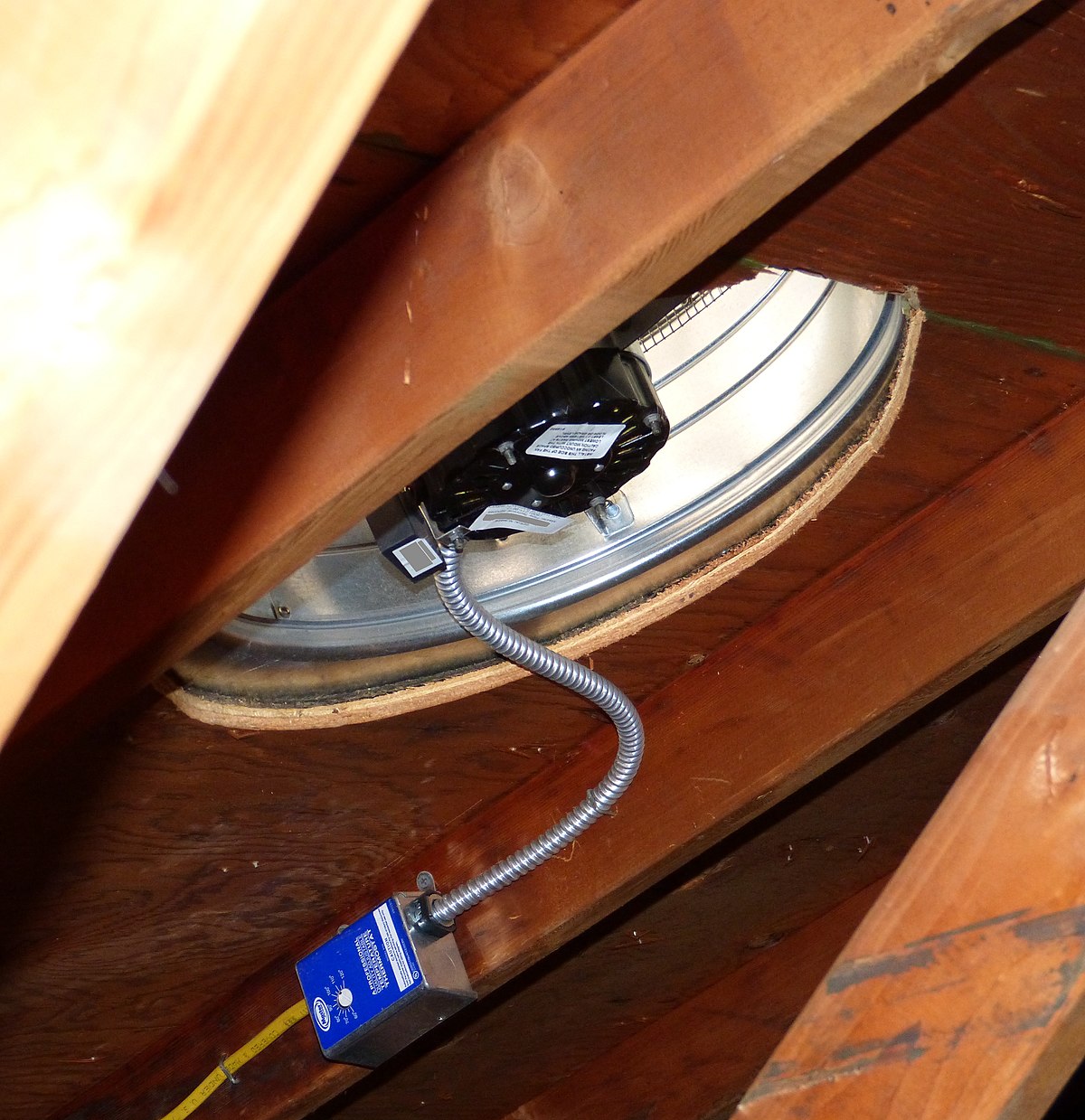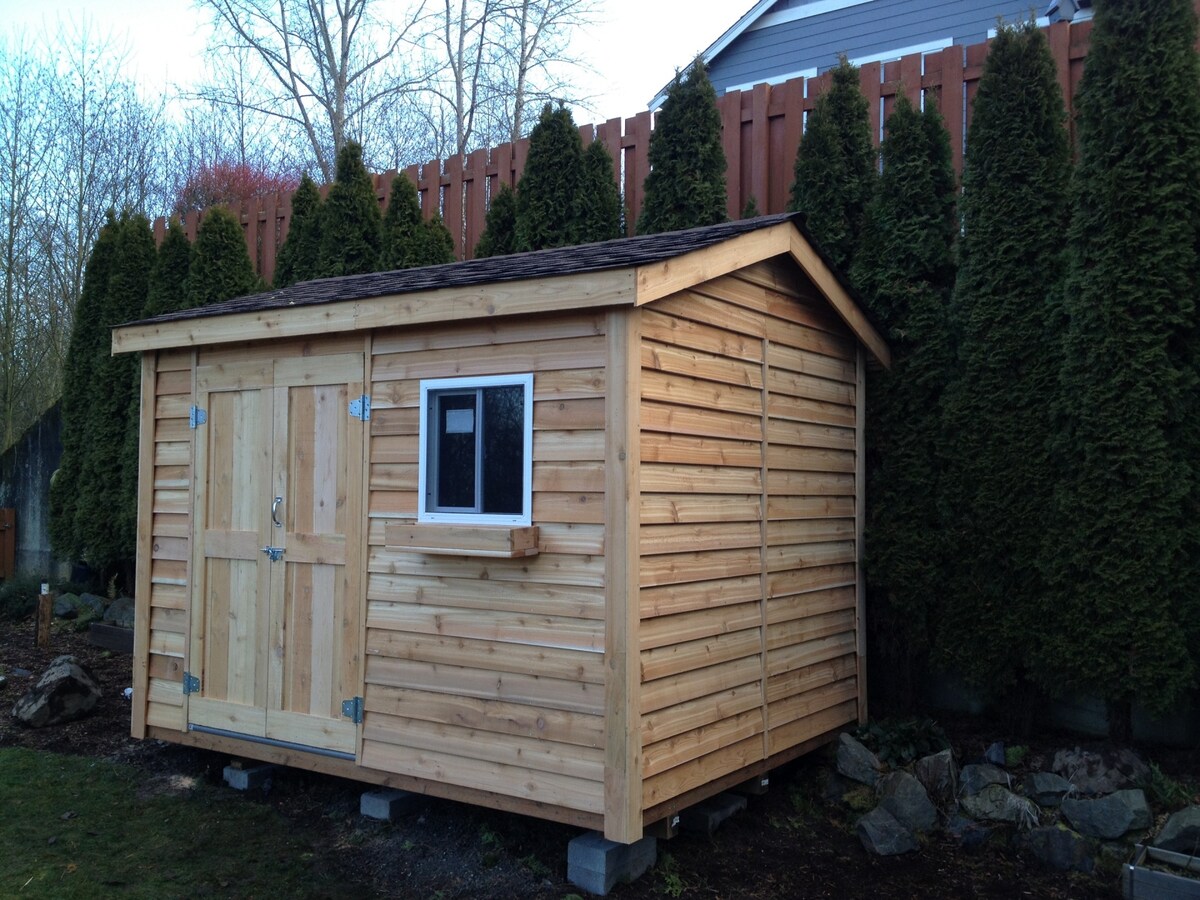Home>Articles>How Do I Know What Size Of Attic Fan Do I Need


Articles
How Do I Know What Size Of Attic Fan Do I Need
Modified: February 1, 2024
Find out the ideal attic fan size for your home with our helpful articles. Get the expert guidance you need to make the right choice and improve your home's ventilation.
(Many of the links in this article redirect to a specific reviewed product. Your purchase of these products through affiliate links helps to generate commission for Storables.com, at no extra cost. Learn more)
Introduction
When it comes to maintaining the proper temperature and air quality in your home, the attic plays a crucial role. One effective way to improve attic ventilation is by installing an attic fan. Attic fans help remove hot air, moisture, and stale air from the attic, preventing damage to the roof and improving overall comfort in your living space.
However, choosing the right size of attic fan can be a daunting task. You want to ensure that your attic fan is powerful enough to effectively circulate air, but also energy-efficient and well-suited to your specific needs.
In this article, we will discuss the factors to consider when determining the size of attic fan you need. By carefully evaluating the size of your attic, your local climate, and your specific ventilation needs, you can make an informed decision that will optimize the performance of your attic fan.
Key Takeaways:
- Choosing the right size of attic fan is crucial for optimal ventilation. Consider attic size, climate, and ventilation needs to ensure proper airflow and energy efficiency.
- Calculate attic square footage, estimate CFM requirements, and choose a fan size that meets your specific needs. Consulting with professionals can provide personalized recommendations for effective attic ventilation.
Read more: How Do I Know What Size Blinds I Need
Factors to Consider
When determining the size of attic fan you need, there are several key factors to consider:
- Attic Size: The size of your attic plays a vital role in determining the appropriate size of an attic fan. A larger attic will require a more powerful fan to effectively circulate air and maintain adequate ventilation.
- Climate: The climate in your area is another crucial factor to consider. Regions with hot and humid climates typically require larger attic fans to handle the increased heat and moisture buildup. Similarly, areas with extreme temperature variations may need fans with higher airflow capacity.
- Ventilation Needs: Consider the specific ventilation needs of your attic. If your attic is prone to excessive moisture buildup or if you have specific air quality concerns, you may need a larger attic fan that can effectively address these issues.
- Roof Design: The design and construction of your roof can impact the amount of airflow in your attic. Factors such as the number and size of vents, the presence of insulation, and the layout of the attic space can influence the size and capacity requirements of an attic fan.
By taking all these factors into account, you can ensure that you choose the correct size of attic fan that will adequately ventilate your attic space, promote energy efficiency, and maintain optimal air quality.
Attic Size
The size of your attic is an important factor to consider when determining the size of attic fan you need. The larger the attic, the more air circulation is required to effectively ventilate the space.
To measure the size of your attic, start by measuring the length and width of the attic floor. Multiply these two measurements to get the square footage of your attic. For example, if the length is 20 feet and the width is 30 feet, the attic size would be 600 square feet.
Keep in mind that the attic fan should be able to cover the entire attic space, so it’s essential to have accurate measurements. If your attic has irregular or divided sections, you may need to measure each section separately and add the square footage together.
Additionally, consider the height of your attic. Attic fans are typically mounted on the roof or in the gable wall, and the height of the attic will affect the fan’s ability to circulate air effectively. A taller attic may require a more powerful fan to push air to all corners of the space.
Once you have determined the size of your attic, you can move on to calculating the airflow requirements and selecting the appropriate fan size for your ventilation needs.
Climate
The climate in your area plays a significant role in determining the size of attic fan you need. Different climates have varying temperature ranges, humidity levels, and air quality conditions, all of which impact attic ventilation requirements.
If you live in a hot and humid climate, such as in coastal regions or tropical areas, your attic is more prone to heat buildup and moisture accumulation. In this case, you will need a larger attic fan with a higher airflow capacity to effectively remove hot air and control humidity.
On the other hand, if you reside in a colder climate, ventilation requirements may differ. Attics in colder regions may experience temperature variations and potential condensation issues. A well-sized attic fan can help regulate temperature and mitigate the risk of moisture-related problems like mold and mildew.
It’s essential to research and understand the climate conditions in your area to determine the appropriate size of attic fan. You can consult local building codes or seek guidance from HVAC professionals who are familiar with the specific requirements for your region.
Keep in mind that climate conditions can change throughout the year, so it may be beneficial to choose an attic fan that can be adjusted to accommodate different seasons. Some attic fans come with built-in thermostats or humidity sensors, allowing the fan to automatically adjust its speed or operation based on the current climate conditions.
By considering the climate in your area, you can select an attic fan that is capable of handling the specific challenges posed by your local weather conditions and ensure optimal ventilation performance year-round.
Ventilation Needs
Understanding your specific ventilation needs is crucial in determining the size of attic fan required for your attic. The ventilation needs can vary based on factors such as the use of the attic, level of insulation, and any specific air quality concerns.
If your attic is used for storage or as a living space, it may require more frequent air circulation to remove stale air and control temperature. Attics with inadequate ventilation can become stuffy and uncomfortable, making it essential to choose an attic fan with a sufficient airflow capacity to maintain a fresh and comfortable environment.
The level of insulation in your attic also affects ventilation needs. Well-insulated attics tend to trap heat and may require a larger attic fan to effectively remove the accumulated heat. Conversely, if your attic has poor insulation, heat transfer is easier, and a smaller attic fan may be sufficient to ventilate the space.
Consider any specific air quality concerns in your attic. If you notice musty odors, excessive moisture, or the presence of mold and mildew, proper attic ventilation becomes even more critical. In such cases, a larger attic fan with a higher airflow capacity can help remove moisture and improve air quality.
Additionally, consult with HVAC professionals or ventilation experts to identify any specific requirements for your attic. They can assess your attic’s ventilation needs based on factors such as the number and type of vents currently in place, airflow restrictions, and any unique challenges presented by your attic’s layout or construction.
By understanding your ventilation needs, you can choose an attic fan that will effectively address any specific concerns, ensure proper air circulation, and maintain a healthy and comfortable attic environment.
When determining the size of attic fan you need, consider the square footage of your attic space. A general rule of thumb is to have 1 CFM (cubic feet per minute) of ventilation for every square foot of attic space.
Determining the Correct Size
Now that you have considered the factors of attic size, climate, and ventilation needs, it’s time to determine the correct size of attic fan for your specific requirements. By following these steps, you can make an informed decision and ensure optimal ventilation in your attic:
- Calculate Attic Square Footage: Measure the length and width of your attic floor and multiply the two measurements to get the square footage. If your attic has irregular or divided sections, measure each section separately and add the square footage together.
- Estimating CFM Requirements: CFM (Cubic Feet per Minute) is a measurement of airflow. As a general guideline, you should aim for a minimum of 1 CFM per square foot of attic space. For example, if your attic measures 600 square feet, you will need a fan with a minimum airflow of 600 CFM. However, certain circumstances may require higher CFM, such as hotter climates or attic spaces with specific ventilation needs.
- Choosing the Appropriate Fan Size: Once you have estimated the required CFM, you can select the appropriate fan size. Attic fans are available in various sizes, typically ranging from 1000 CFM to 5000 CFM or more. Consider the CFM rating, energy efficiency, noise level, and any additional features or controls that may be beneficial for your needs. It’s important to choose a fan that sufficiently meets the CFM requirements while being energy-efficient and suitable for your specific attic conditions.
Keep in mind that these calculations provide a general guideline for determining the correct size of attic fan. For more accurate results, consult with HVAC professionals or ventilation experts who can assess your attic’s unique requirements and provide personalized recommendations.
By taking these steps and carefully considering your attic size, climate, and ventilation needs, you can select the correct size of attic fan that will provide effective ventilation, enhance energy efficiency, and maintain a comfortable living environment.
Calculate Attic Square Footage
Calculating the square footage of your attic is an important step in determining the size of attic fan you need. Having an accurate measurement of the attic’s size allows you to properly size the fan to ensure proper air circulation and ventilation.
To calculate the square footage of your attic, follow these steps:
- Measure the Length and Width: Use a measuring tape to measure the length and width of the attic space. Measure the longest distance from one end of the attic to the other for the length, and the widest distance from one side to the other for the width.
- Multiply the Length and Width: Once you have the measurements, multiply the length by the width. For example, if the length is 20 feet and the width is 30 feet, the calculation would be 20 feet x 30 feet = 600 square feet. This means the attic has an area of 600 square feet.
- Consider Divided or Irregular Attic Spaces: If your attic has divided sections or irregular shapes, you may need to measure each section separately and then add the square footage together. Measure each section’s length and width individually, and then calculate the square footage for each section. Finally, sum up the square footage of all the sections to get the total square footage of the attic.
By accurately calculating the square footage of your attic, you will have a precise measurement to use when determining the appropriate size of attic fan. This measurement serves as the foundation for estimating the required airflow and selecting a fan that will effectively ventilate the entire attic space.
Estimating CFM Requirements
Estimating the CFM (Cubic Feet per Minute) requirements is an essential step in determining the size of attic fan you need. CFM measures the volume of air that the fan can move in a minute and is an important factor in ensuring effective ventilation in your attic.
To estimate the CFM requirements for your attic, follow these guidelines:
- Minimum CFM per Square Foot: As a general rule of thumb, aim for a minimum of 1 CFM per square foot of attic space. For example, if your attic measures 600 square feet, the minimum CFM needed would be 600 CFM. This provides a baseline for the airflow needed to circulate and ventilate the entire attic area.
- Consider Climate Conditions: Take into account the climate conditions in your area. Hotter climates or regions with high humidity levels may require additional CFM to effectively remove excess heat and moisture from the attic. In such cases, you may need to increase the CFM requirements based on the specific challenges posed by your climate.
- Account for Attic Usage: Consider how the attic is being used. If it is utilized as a living space, storage area, or frequently occupied area, you may need more CFM to meet the increased ventilation needs. Higher airflow can help maintain a comfortable environment and reduce the risk of heat buildup or humidity issues.
- Consult with Professionals: It is always beneficial to consult with HVAC professionals or ventilation experts who can assess your attic and provide personalized recommendations. They can consider additional factors such as insulation levels, the number and type of vents, and any specific ventilation challenges in your attic, providing more accurate CFM requirements.
Keep in mind that these guidelines provide a general estimation for CFM requirements. It is essential to evaluate your specific attic conditions and ventilation needs to determine the appropriate CFM for your attic fan. By doing so, you can ensure optimal airflow and effective ventilation for a comfortable and well-maintained attic space.
Choosing the Appropriate Fan Size
Choosing the appropriate size of attic fan is crucial to ensure effective ventilation and optimal performance in your attic. Once you have estimated the CFM requirements based on your attic size and specific needs, you can select a fan size that meets those requirements.
Consider the following factors when choosing the appropriate fan size:
- CFM Rating: Look for the CFM rating listed on the fan. Ensure that the fan’s CFM rating matches or exceeds the minimum CFM requirements estimated for your attic. It is recommended to choose a fan with a slightly higher CFM rating to account for any additional airflow needs or future changes in attic usage.
- Energy Efficiency: Evaluate the energy efficiency of the fan. Look for fans that are ENERGY STAR certified, as they are designed to be more energy-efficient and can help reduce your energy costs. Energy-efficient fans often combine high performance with lower energy consumption, helping you achieve optimal ventilation while minimizing energy waste.
- Noise Level: Consider the noise level of the fan. Attic fans can produce some noise during operation, so it’s important to choose a fan with low noise ratings, especially if the attic is close to living spaces or bedrooms. Look for fans with noise ratings below 2.0 sones to ensure a quiet and comfortable environment.
- Additional Features: Evaluate any additional features or controls that may be beneficial for your needs. Some attic fans come with built-in thermostats, humidity sensors, or adjustable speed settings, allowing the fan to automatically adjust its operation based on the attic’s temperature and humidity levels. These features can enhance the fan’s efficiency and convenience.
It is also advisable to consult with professionals or ventilation experts who can provide personalized recommendations based on the unique characteristics of your attic. They can assess factors such as the roof design, attic layout, insulation, and local climate conditions to help you choose the most suitable fan size and model.
By considering the CFM rating, energy efficiency, noise level, and additional features, you can select an attic fan that meets your specific requirements, ensuring proper ventilation, energy savings, and a comfortable attic environment.
Read more: What Size Mixer Do I Need
Conclusion
Choosing the right size of attic fan is essential for effective attic ventilation and maintaining a comfortable living environment. By considering factors such as the attic size, climate, and ventilation needs, you can determine the correct size of attic fan that will optimize airflow and promote energy efficiency.
Calculating the square footage of your attic provides a foundation for estimating the required CFM. Aim for a minimum of 1 CFM per square foot, taking into account climate conditions and attic usage. Consulting with professionals can help ensure accurate CFM requirements tailored to your unique attic characteristics.
Once you have estimated the CFM, selecting the appropriate fan size is crucial. Look for fans with CFM ratings that meet or exceed your estimated requirements. Consider the energy efficiency, noise level, and any additional features that enhance convenience and performance.
Remember that every attic is different, and it’s always beneficial to consult with professionals who can assess your specific attic conditions and provide personalized recommendations.
By choosing the right size of attic fan, you can achieve optimal ventilation, reduce moisture-related issues, control temperature, and improve overall air quality in your attic. This not only protects your home’s structure but also enhances energy efficiency and creates a more comfortable living environment for you and your family.
Investing in the correct size of attic fan will ensure that your attic remains a well-ventilated and healthy space, contributing to the overall well-being of your home.
Frequently Asked Questions about How Do I Know What Size Of Attic Fan Do I Need
Was this page helpful?
At Storables.com, we guarantee accurate and reliable information. Our content, validated by Expert Board Contributors, is crafted following stringent Editorial Policies. We're committed to providing you with well-researched, expert-backed insights for all your informational needs.














0 thoughts on “How Do I Know What Size Of Attic Fan Do I Need”